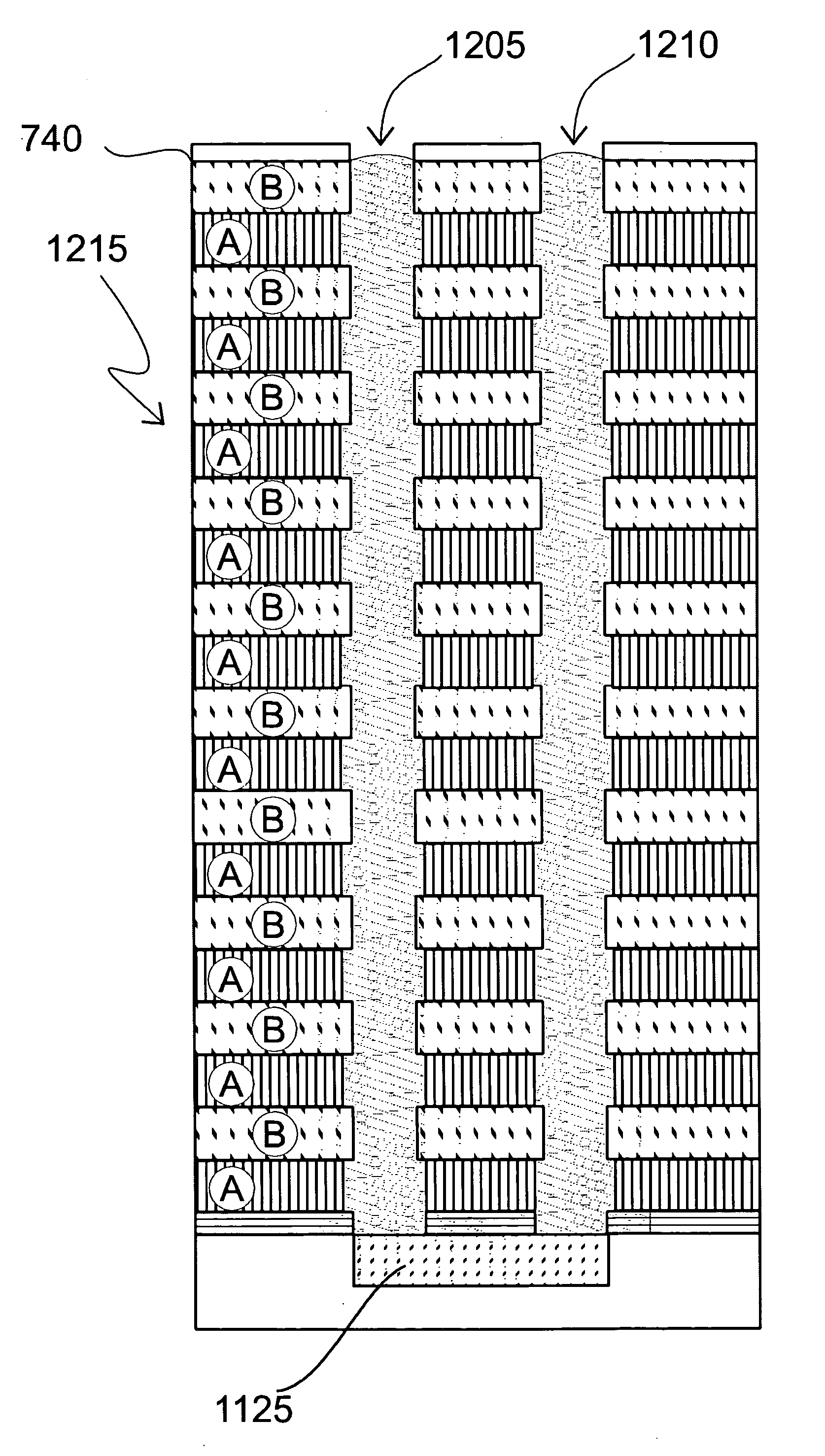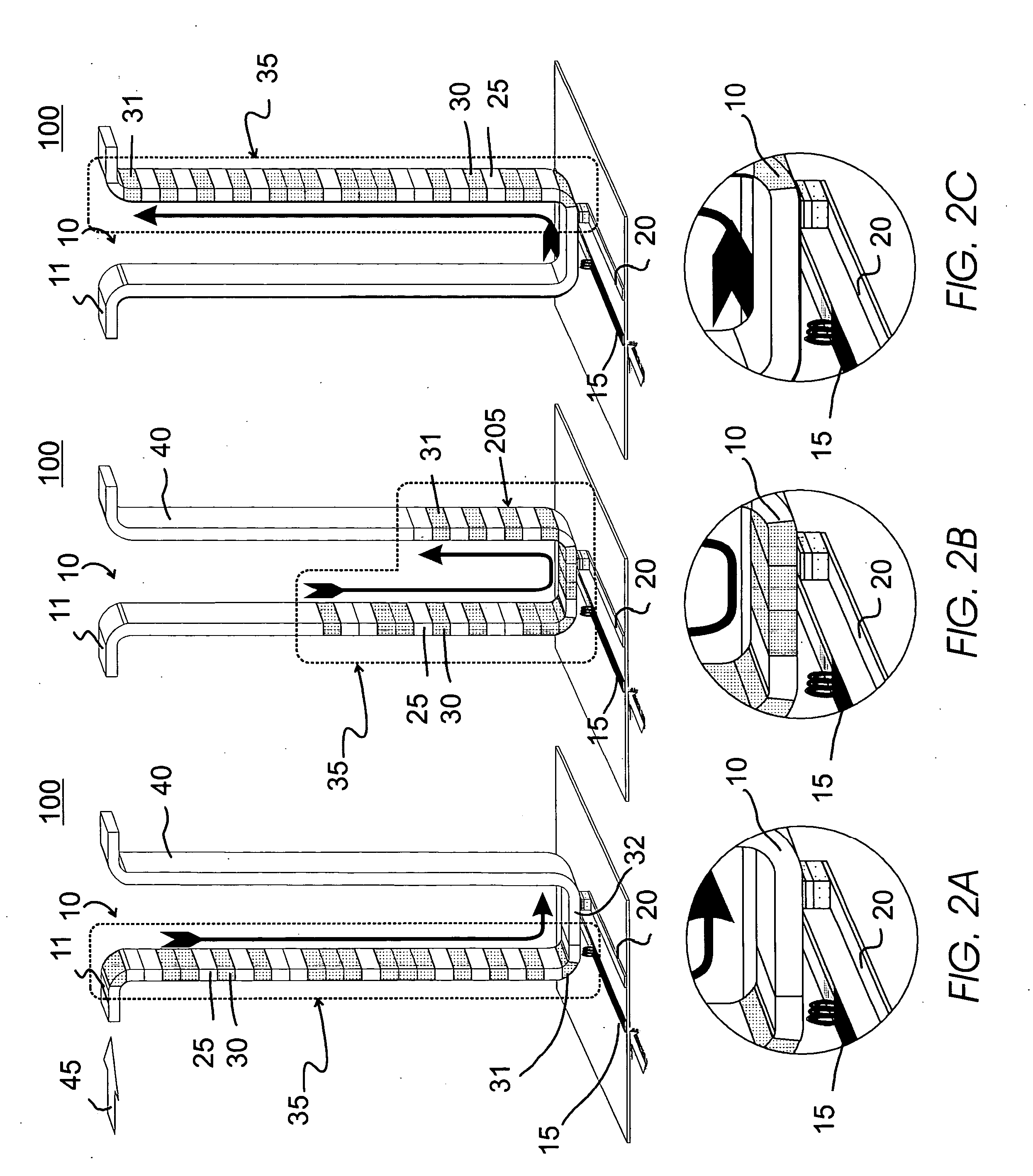Method of fabricating data tracks for use in a magnetic shift register memory device
a technology of magnetic shift register and data track, which is applied in the field of memory storage system, can solve the problems of solid-state random access memory, device with moving parts tend to wear out and fail, and inherently unreliable disk driv
- Summary
- Abstract
- Description
- Claims
- Application Information
AI Technical Summary
Benefits of technology
Problems solved by technology
Method used
Image
Examples
Embodiment Construction
[0055] The following definitions and explanations provide background information pertaining to the technical field of the present invention, and are intended to facilitate the understanding of the present invention without limiting its scope:
[0056] Homogeneous magnetic material means a contiguous volume of magnetic material, which may have a complex shape, which nominally has the same magnetic properties, such as magnetization, magnetic anisotropy, magnetic exchange and magnetic damping, independent of the position within the volume.
[0057] Inhomogeneous magnetic material means a contiguous volume of magnetic material, which may have a complex shape, whose magnetic properties, such as magnetization, magnetic anisotropy, magnetic exchange and magnetic damping, may vary with position within the volume due, for example, to a change in material composition and / or due to some physical process during the deposition of this material or acting on the material after the material has been de...
PUM
 Login to View More
Login to View More Abstract
Description
Claims
Application Information
 Login to View More
Login to View More - R&D
- Intellectual Property
- Life Sciences
- Materials
- Tech Scout
- Unparalleled Data Quality
- Higher Quality Content
- 60% Fewer Hallucinations
Browse by: Latest US Patents, China's latest patents, Technical Efficacy Thesaurus, Application Domain, Technology Topic, Popular Technical Reports.
© 2025 PatSnap. All rights reserved.Legal|Privacy policy|Modern Slavery Act Transparency Statement|Sitemap|About US| Contact US: help@patsnap.com



